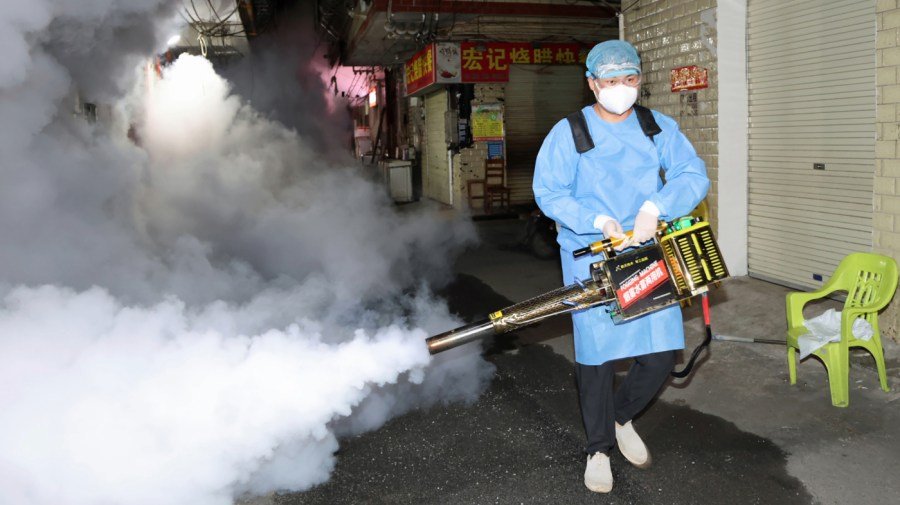
For the past several weeks, many around the world and here in the U.S. saw a mysterious virus spreading in the city of Foshan in Southern China’s Guangdong Province and couldn’t help but think, here we go again.
Are we going to be next? Should I be afraid? Are virus-laden Aedes mosquitos heading across the seas to my neighborhood?
The World Health Organization echoed this sentiment in their statements as they documented increasing spread around the world and over 8,000 cases in Southern China. The WHO warned of an epidemic threat.
But then the cases in Foshan began to drop, and this week, the city of Foshan ended its Level III Emergency response.
And so, the answer to the pandemic question is, once again, a resounding no. You will not be swarmed by another virus so soon after COVID. Though Chikungunya can sometimes make you quite sick, keep in mind that it isn’t a new virus — it has been around since at least the 1950s in Tanzania.
And according to the European Center for Disease Prevention and Control, last year there were 620,000 reported cases and 213 deaths from this virus in the Americas, Asia, Africa and Europe, so the summer spread in China is from an old virus, not a new one.
Which is not to say that there isn’t a problem. Mosquito-borne viruses, including this one, (along with dengue and Zika) are definitely on the increase.
And Chikungunya can cause marked symptoms, including high fever, pronounced bone, joint and muscle pain and sometimes even neurological problems, including encephalitis.
But the major hot spot for cases remains the Americas and the Caribbean. Over 180,000 Chikungunya cases have been reported in Brazil this year alone, as infected mosquitoes come out of the Amazon Rain Forests into more populated areas.
The same is true for dengue fever, which is transmitted by the same Aedes mosquito and can be difficult to distinguish from Chikungunya. Dengue caused over 14 million cases worldwide last year, double the 7 million cases reported in 2023.
But that’s the science. When it comes to emotion, the draconian measures reportedly being used in China fanned the flames of fear and brought back bad memories of COVID lockdowns and restrictions rather than convincing anyone that they would succeed in controlling the virus or mosquitos.
Did anyone believe that hosing people in Foshan down with insect repellent or going door to door to seek people out and hitting them with fines if they had any standing water was going to staunch the spread of the Chikungunya virus?
And how would quarantining patients ill with this virus in hospitals under mosquito netting as occurred in Foshan help to contain it when it was the mosquitos which spread the virus, not the humans?
Yes, mosquitoes can travel on planes through luggage or in cargo bays. They also travel on cargo ships. The Aedes aegypti and albopictus mosquitoes which carry Chikungunya and dengue survive in small amounts of water and can be transported great distances.
Mosquitoes or sick patients could eventually bring it to the U.S. and seed populations of Aedes mosquitos here, which could then spread it further. But this could never be a common occurrence.
Plus, we are far more likely to see outbreaks traced to travelers from Brazil right now than from China, based on the sheer number of cases in Brazil.
Yet, the level two travel advisory that the Centers for Disease Control and Prevention put in place for Brazil was for oropouche, a different mosquito-borne virus which is far less common and generally causes milder symptoms.
Dr. Peter Hotez, dean of the National School of Tropical Medicine at the Baylor College of Medicine agreed with me that we can expect “a big expansion of mosquito transmitted viruses out of the Amazon into more populated areas or South America.”
“And what we see first in Brazil like Zika and Chikungunya eventually winds up in the Caribbean and then in Texas and the Gulf Coast,” Hotez added.
Keep in mind that no matter how many cases of Chikungunya or dengue the U.S. sees, viruses that require mosquitoes to spread them will not cause worldwide pandemics.
The mosquito, no matter how aggressive or prolific, both causes and limits the efficiency and speed of spread among humans.
On the other hand, the fear generated from senseless invasions of privacy in the name of public health can be boundless. The snatching away of civil liberties in the name of public health carries with it an unfortunate reminder of the brutal restrictions of the COVID pandemic.
Knee jerk restrictions not only cause tremendous collateral damage in terms of the social and economic order; they also do too little to control a contagion. The last thing we need is a repeat of that performance with any virus, especially one which requires a mosquito to spread it.
Marc Siegel, M.D., is a clinical professor of Medicine and medical director of Doctor Radio at New York University’s Langone Health.


